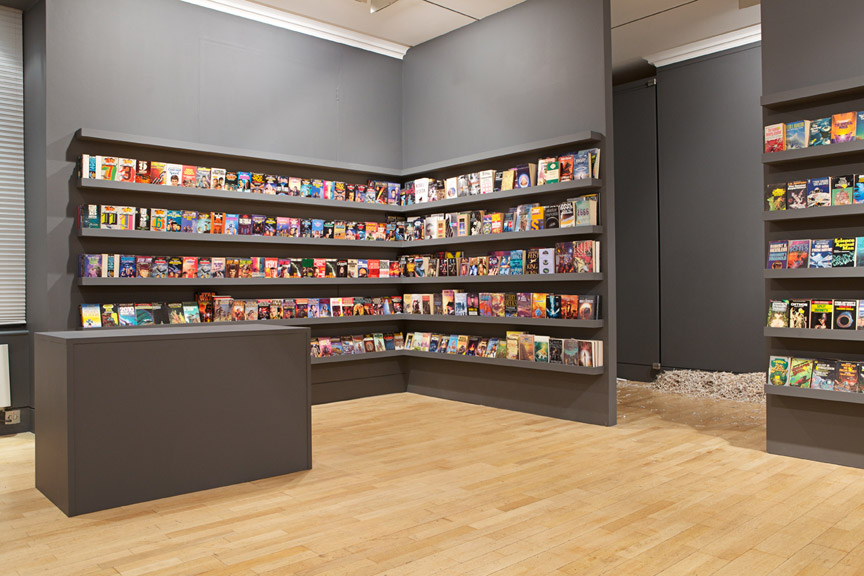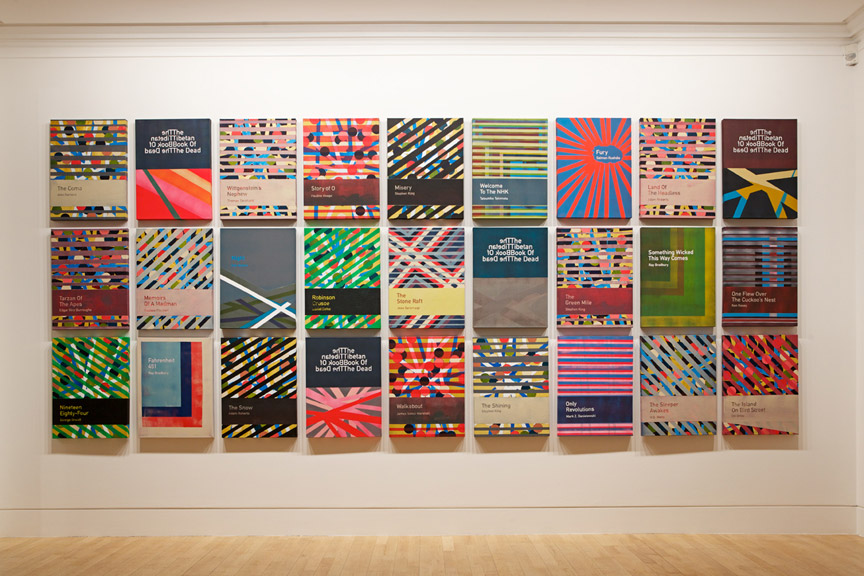Shows
Heman Chong’s “LEM1”


Heman Chong has frequently been called a conceptual artist. While the generic tag has often been used as a blunt shorthand for pinning down artistic practices divested of any form of medium specificity, its application to Chong packs a certain precision. Chong’s works are thoroughly, almost archetypally conceptual. But their relationship to the legacy of late-1960s conceptualism is less one of indebtedness than critical cognizance of the movement’s latent capacities—specifically its potentiality as a framework for collective imaginings of futurity.
“LEM1” is the Singaporean artist’s first solo exhibition in the UK, taking the form of a second-hand science fiction and fantasy bookshop in which visitors can browse and purchase the books for GBP 1 each. The work builds upon Chong’s fascination with science fiction, seen best in his ongoing series of paintings of self-designed book covers for science fiction novels (2010– ), the most recent of which are on display in the space adjacent to the temporary bookshop. If the paintings are construed as a series of “recommendations,” to use a term that Chong himself derived from the conceptualist gesture of pointing people towards things, the creation of “LEM1” marks the expansion of that gesture into a transactional system that endows the books with a specified value. What is merely pointed to in the paintings here attains both a physical and, moreover, social tangibility; the token £1 suggests that the nature of the transaction is not economic but social, the single pound signifying the reader’s investment in the artist’s project of reclaiming science fiction as a force of social possibility. In exchange for the pleasures of reading, the artist makes a quiet exhortation to the reader that echoes the title of that signature John Lennon song, incidentally released during the peak of conceptualism: “imagine.”

Chong’s valorization of science fiction is provocative considering the popular tendency to relegate the genre to the realm of frivolous fancy—a reality alluded to in the work by the overwhelming dominance of pulp fiction among the books on sale. But by reframing the science fiction novel as a conceptual object and thus situating it within a paradigm that favors the imagined and unpresentable over the immediately perceivable, the futurity pointed to in science fiction novels is suddenly made elusive and unfathomable, rescued from its banality as kitsch. If the conceptual object is that which perpetually exceeds itself, which frustrates any attempt at immersing oneself into the thing itself, Chong appears to be calling for a reading of science fiction that operates in a similar mode of excess—the books in “LEM1” are not merely whimsical worlds for our escapist indulgences; they are a call for imagination.
It is also intriguing that the books on sale were chosen based on Chong’s current research interests, as he is in the midst of writing his own science fiction novel due for completion by 2013, making “LEM1” essentially a compendium of his personal encounters with the genre. Perhaps there is here an oblique relation to the artist’s professed penchant for taking solitary walks—a conceptualist trope typified by the walks of Richard Long and Bas Jan Ader. In comparison to Chong’s recent show at Singapore’s NUS Museum, where he exhibited 1,001 photographs of deserted public interiors (in the form of calendars) taken all over Singapore, over a period of seven years, the walk here is metaphorical but no less solitary. Like the quasi-nostalgic, monochromatic photographs of Long, the books in “LEM1,” as well as the painted book covers, are stand-ins for the ephemeral and intensely personal encounters between reader and fiction—a bygone here-and-now. But like the grainy photographs of Ader, they also point towards an experience of the sublime that is yet to be attained as Chong’s quest towards futurity in the penning of his novel rages on.

However, Chong’s work also bears a conspicuous disjuncture from the conceptualist idiom due to its striking visuality, evident not just in the modernist aesthetic of his paintings, but also in the deliberate inclusion of books in his bookshop with some of the gaudiest covers imaginable—which are utterly incongruous to the show’s overriding vindication of the science fiction novel as the conceptualist object par excellence. But Chong’s interest in the visual here does not indicate a rematerialization of the art object, the corollary of which is its re-fetishization. Instead, he is emphasizing the inevitably mnemonic nature of the conceptual object. Just as that fuzzy, immortalized photograph of Ader setting off into the ocean will forever point towards his as-yet-unfound “miraculous,” the covers of Chong will persist in memory as mementos of his (and our) travels in science fiction.







